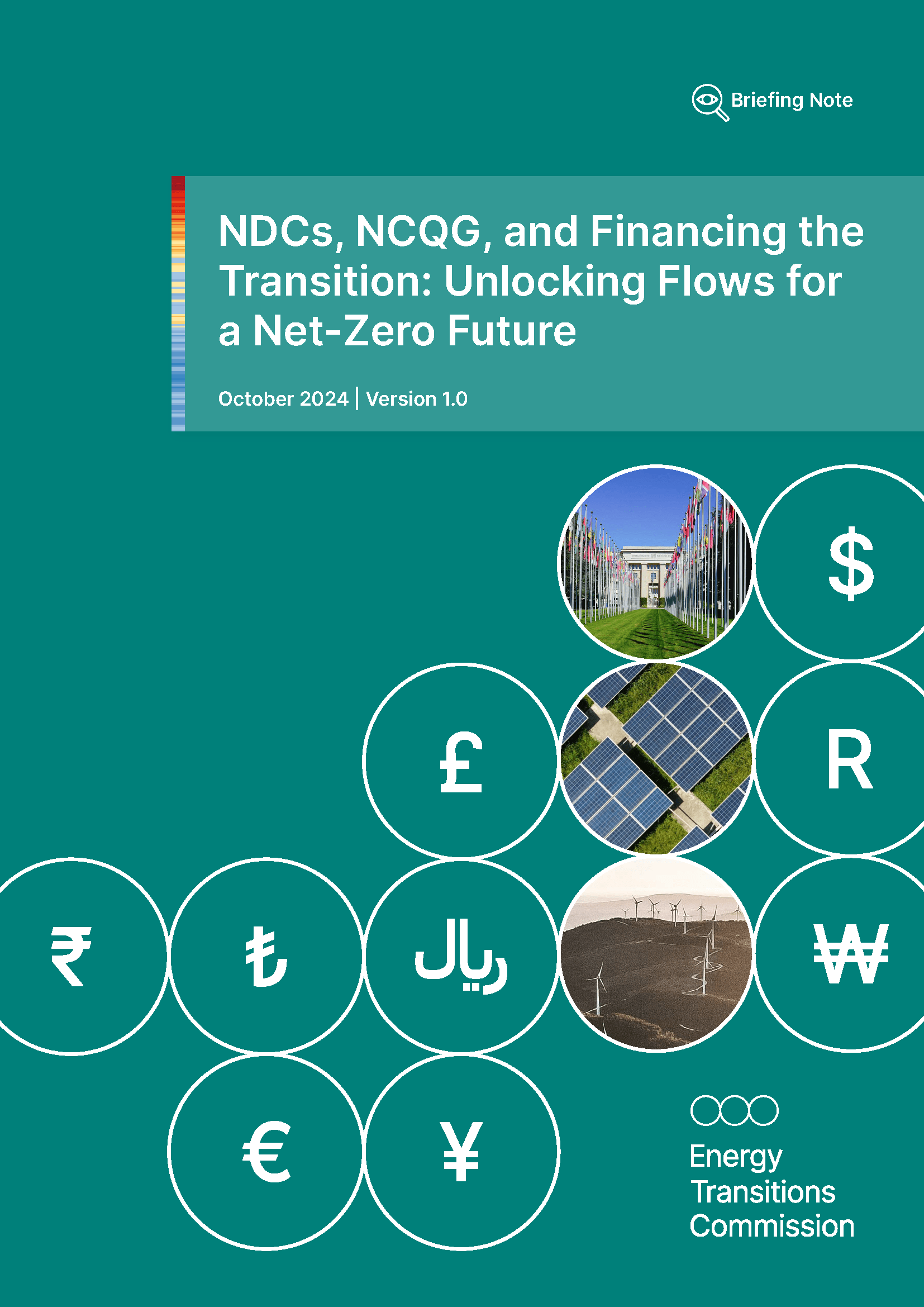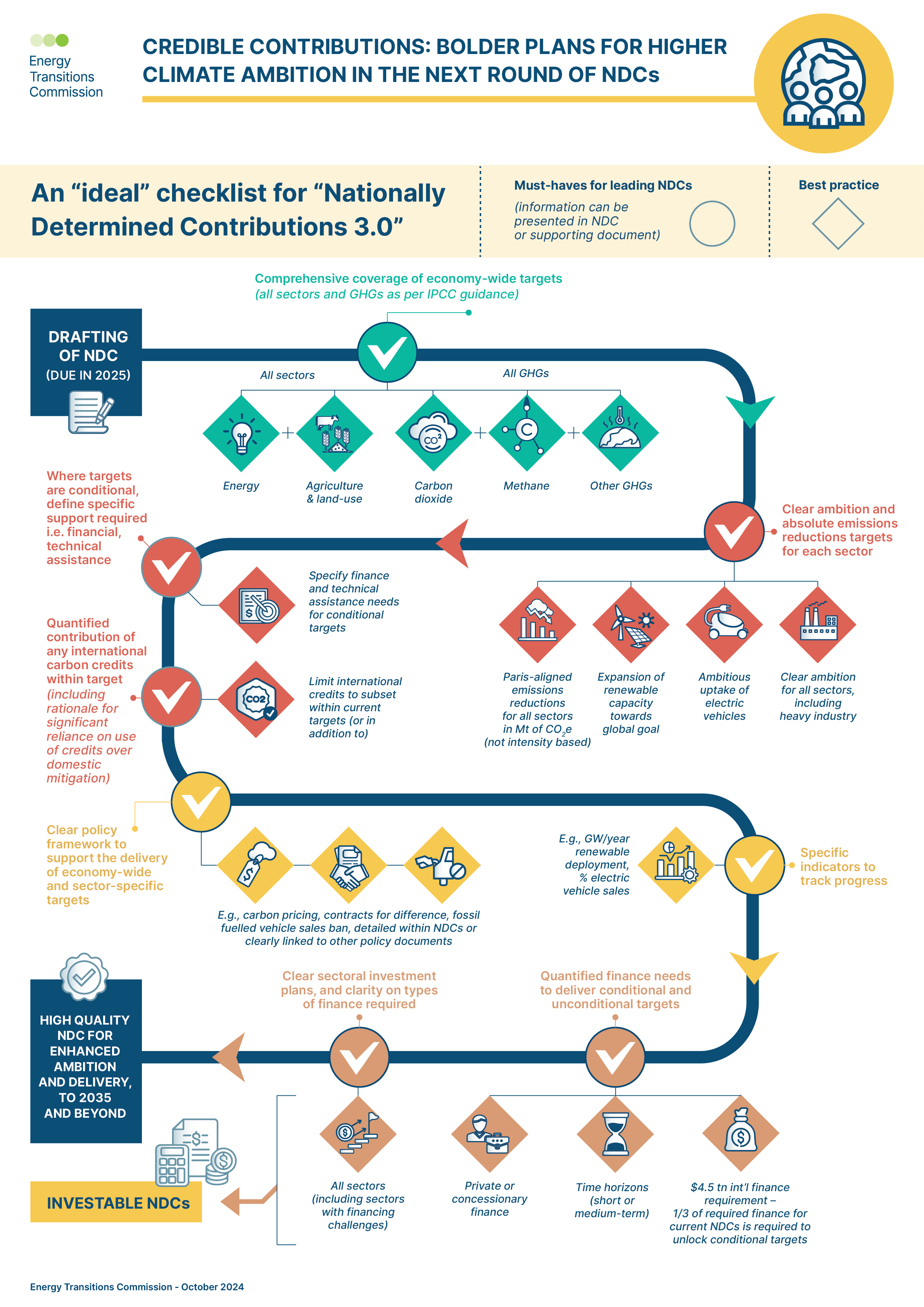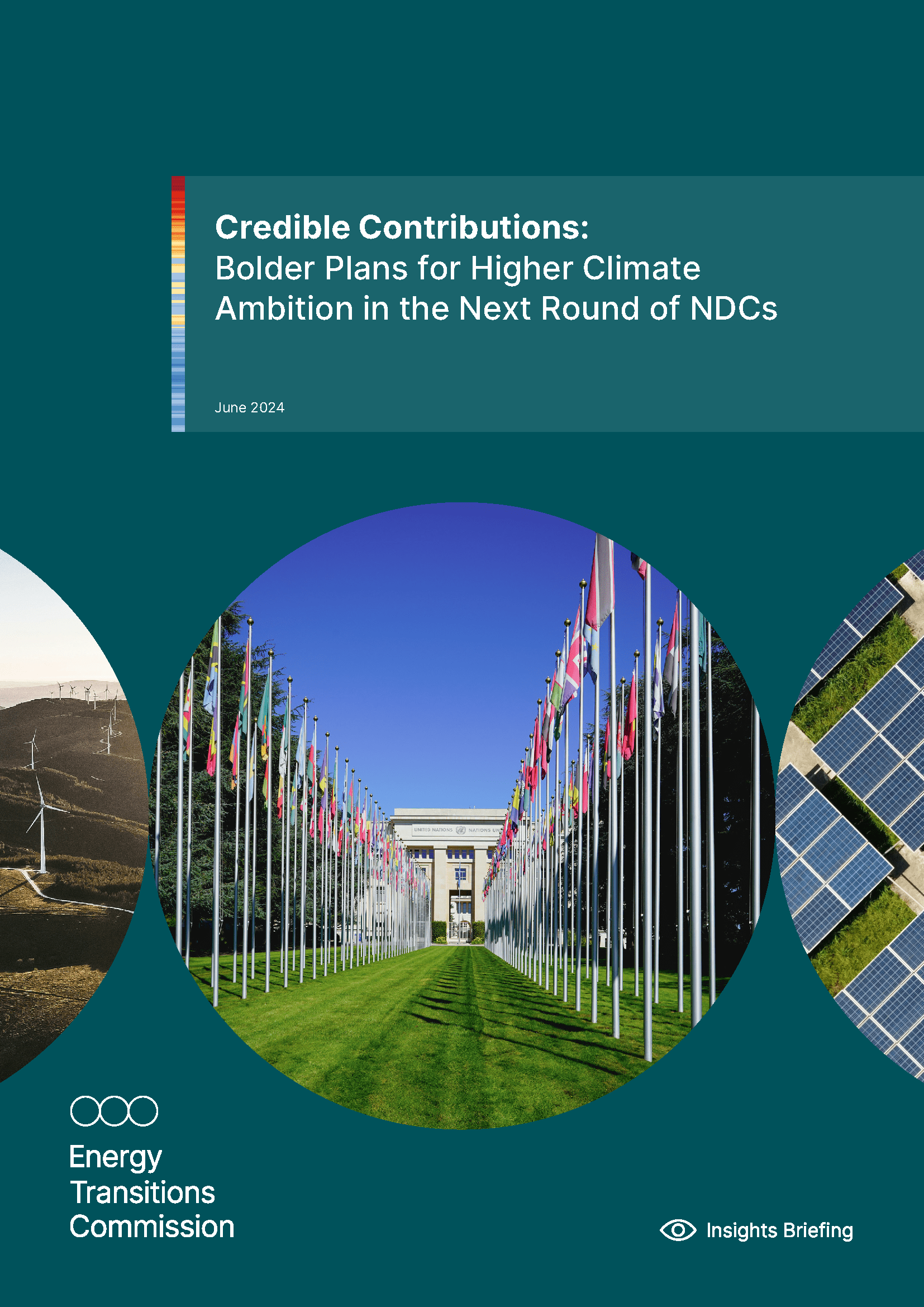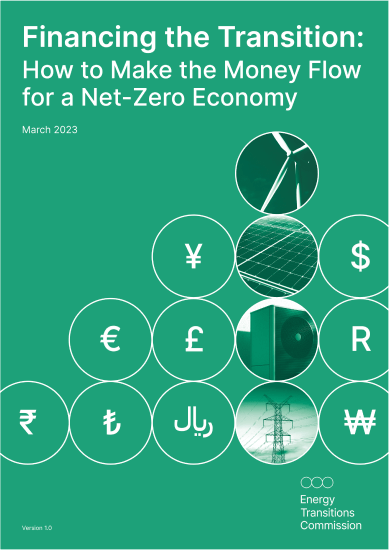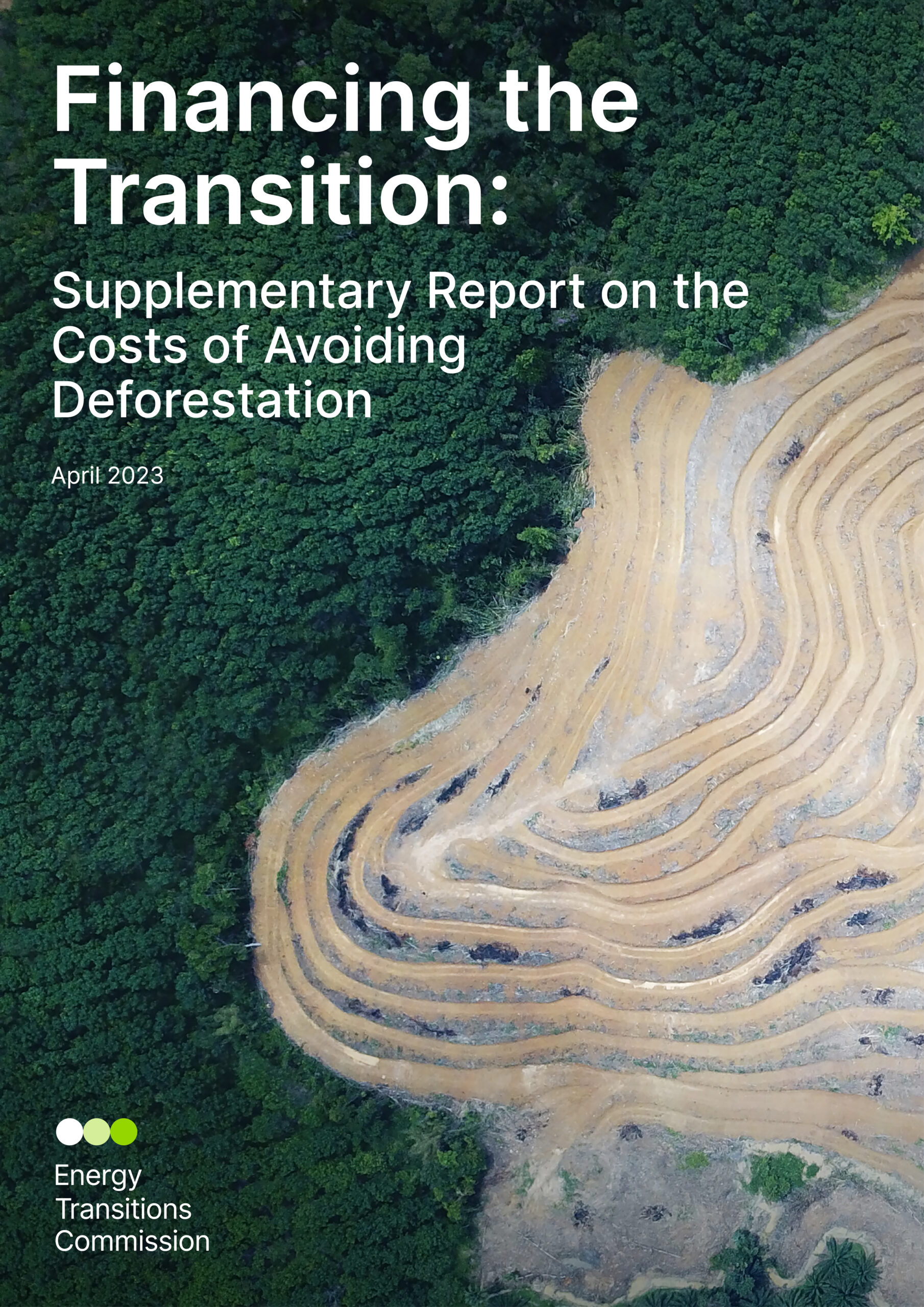NDCs, NCQG, and Financing the Transition: Unlocking Flows for a Net-Zero Future
October 2024
“Climate finance” will be a key subject at COP29, with particular attention to the proposed “New Collective Quantified Goal“ (NCQG) for financial flows from high-income to low-income countries. But the term “climate finance“ is often used vaguely and broadly, covering several different challenges and priorities.
In its latest publication “NDCs, NCQG, and Financing the Transition” the ETC clarifies the nature and scale of different types of finance required, and proposes four principles to ensure a useful conclusion of the NCQG debate. It also explains the vital role that updated Nationally Determined Contributions (NDCs) can and must play in unleashing financial flows.
Through frameworks like the NCQG and NDCs, countries can set ambitious goals backed by policies that attract large-scale investments from the private sector and can meet the majority of finance needs for climate mitigation and adaptation.
What is the New Collective Quantified Goal?
The Paris climate pact included a commitment to agree on the extent to which higher-income countries will financially assist low-income countries with mitigation and adaptation. This NCQG will replace the current $100 billion per annum target for climate finance flows from developed to developing countries which was agreed in 2009 but consistently undelivered until 2022.
What are Nationally Determined Contributions?
The NDCs are the crucial mechanism, established by the Paris Conference, through which countries commit to voluntary national actions to reduce emissions, in line with the global objective of limiting global warming to well below 2°C. Countries are required to submit ratcheted NDCs every five years.


